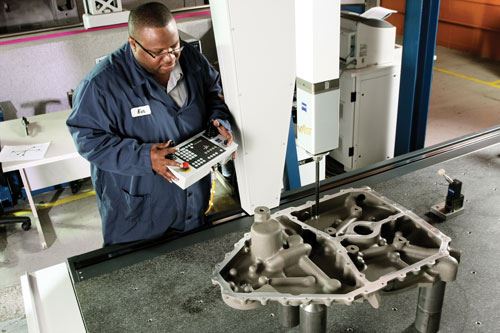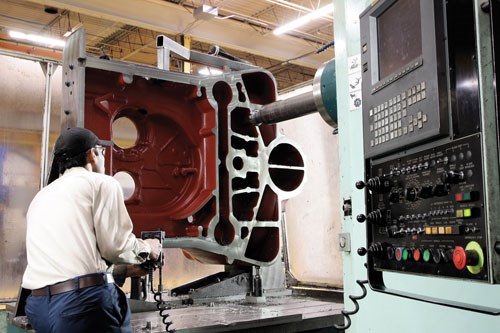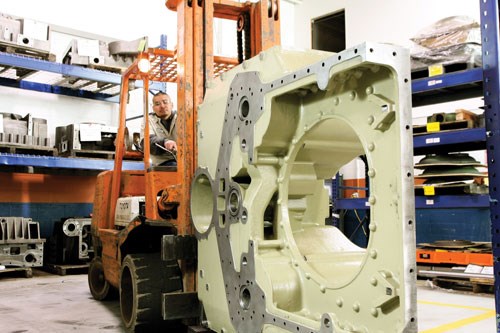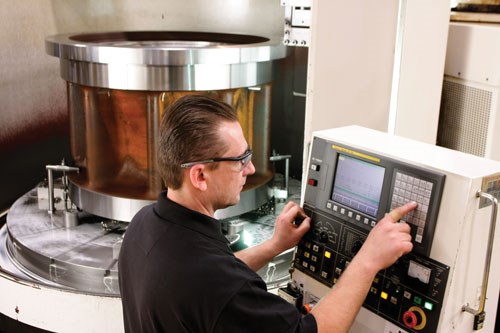ERP Synergizes Disparate Departments, Applications
Despite access to a sophisticated ERP system, this company still used manual methods for managing critical resources. Expanding its use of that system has streamlined operations and synergized disparate software applications and departments.
Old habits die hard. While clichéd, that statement aptly describes the mindset behind the methods Bley LLC used to manage critical resources when manager Krishna Rajagopal arrived for his first day on the job. Despite access to a sophisticated enterprise resource planning (ERP) system, the company was still using time cards, spreadsheets and other manual data collection and evaluation methods for everything from payroll to invoicing. Thanks to the efforts of Mr. Rajagopal and others, it has since employed the ERP system across all departments to streamline operations and boost efficiency, productivity and operational visibility. Perhaps more importantly, the ability to customize the system and integrate it with other, disparate software applications promises to pay dividends for years to come.
Operating out of a 53,000-square-foot-facility in Elk Grove, Illinois, Bley LLC is a contract manufacturer that serves a diverse array of markets, including heavy transportation, mining, oil and gas, alternative energy, aerospace and defense. Among the machining equipment on the shop floor are single- and twin-spindle turning centers, VTCs and three-, four- and five-axis machining centers. While the company machines parts ranging in weight from a few ounces to more than 15 tons, it focuses primarily on larger work.
Bley tends to avoid simple work in favor of high-tolerance, difficult parts, which it considers a core competency. Ensuring that such work is produced to specification requires a robust quality control operation. Moreover, the company is often involved with such projects at the conceptual phase. Its engineering department employs a structured R&D procedure, CAD software and other tools to help customers move products from prototype to production. The shop also supplements its contract work by devoting a small portion of its business to machine building. With only 56 total employees tasked with these diverse enterprises, maintaining efficiency depends on the company’s ability to effectively manage critical data and systems across multiple departments.
Mr. Rajagopal says he was pleasantly surprised with the management system that was in place when he was hired as part of the growing company’s efforts to become more efficient and competitive by streamlining operations. Developed by Epicor Software Corporation (Irvine, California), Epicor Manufacturing is an ERP system based on a service-oriented architecture—that is, a series of platform-independent, self-contained modules that can be mixed and matched according to user requirements. “I inherited the system, but it is a product I would buy today in the blink of an eye,” he says.
However, he soon realized that the company was using perhaps only 5 percent of the software’s capabilities. While the system had provided efficiency gains in some areas—keeping track of backlogs, for instance—the company still employed manual methods to manage most of its critical infrastructure. “Most everything was outside the system,” Mr. Rajagopal says. “That’s just the way it had always been done.”
The company now uses the system to automate tasks across all departments. A potential customer’s information is pulled into the ERP system as soon as it’s identified as a prospect. When an RFQ comes in, the system automatically generates a quote based on the shop’s chosen manufacturing process and its own labor rates, overhead and other costs. Once an order is placed, the scheduling system allocates time to various manufacturing resources according to the job’s priority, the time required for each operation and other relevant information. Automatic e-mail notifications alert the proper personnel to critical events, such as when a new order of raw material is needed. Payroll, invoicing, shipping and other business functions are similarly automated.
However, Mr. Rajagopal says these benefits wouldn’t have been nearly as extensive were it not for the features that he thinks truly set the system apart as an ERP solution: namely, its customization capabilities and seamless integration with other software applications. In essence, the system acts as master data source that combines and synergizes critical functions of disparate software applications. This enables the company to conduct business in its own way, using applications of its own choosing, without being tied down by limits inherent to the ERP system. “Usually you’re squeezed into other people’s processes, but here, we are squeezing our processes into Epicor Manufacturing,” Mr. Rajagopal says.
As an example, he cites the synergy between the ERP software and the company’s HMI/SCADA solution. Developed by Wonderware, that system is essentially a “virtual factory,” Mr. Rajagopal says. Along with custom software developed internally at Bley, the Wonderware system tracks every machine in the shop and reports whether each is on or off, which parts are undergoing which operations there and other such information.
Integration between this system and Epicor Manufacturing is a function of the ERP software’s Service Connect feature, which provides secure workflow orchestrations between different applications. For Bley, this feature enables seamless, automated data exchange between the ERP system and, through the Wonderware system, the CNC machines on the shop floor. For example, operators scan parts with handheld readers to pull process information from ERP that was entered during the quoting phase. This typically includes which operations to perform, which programs and tools to use and similar instructions. Likewise, once Wonderware reports the completion of a part, the ERP software’s inventory data updates automatically.
Service Connect is also critical for exchanging data between the ERP system and the Epicor Advanced Quality Management (AQM) system, a quality performance management solution powered by software from developer IQS. Service Connect ensures that nothing is lost in translation when working between AQM and the ERP system, Mr. Rajagopal says. For example, whenever a part is created in Epicor Manufacturing, details for that part are pulled into AQM automatically. Likewise, if dimensional checks entered in AQM don’t meet tolerance requirements, the part is rejected through AQM and back into the ERP system. “It’s a single point of entry, so we’re not inputting data into two systems,” he explains. “We’re doing it in only one, and I’m using the master data in Epicor Manufacturing, which is my core program.”
As the company continues to grow, the software will become even more important, he notes. For instance, the Service Connect feature will be invaluable for integrating two new CAD systems and a toolsetting program the company has been eyeing. Beyond that, Mr. Rajagopal envisions a future in which customers and suppliers will be able to enter an ID number and track the progress of their parts on the shop floor. “While this could show off our ‘dirty laundry,’ so to speak, to me it’s all about transparency,” he says. “Transparency means that the data is reliable, and ultimately it will generate a lot more business. It’s all about making sure you take care of the customer.”
Related Content
In Moldmaking, Mantle Process Addresses Lead Time and Talent Pool
A new process delivered through what looks like a standard machining center promises to streamline machining of injection mold cores and cavities and even answer the declining availability of toolmakers.
Read More8 Ways to Increase Productivity on the Manufacturing Floor
When it comes to machine shop productivity, continuous improvement depends on efficient employees, equipment and processes.
Read MoreIMTS Takeaways From the Modern Machine Shop Editorial Team
The first in-person IMTS in four years left the MMS editorial staff with a lot to digest. Here are a few of our takeaways from the show floor.
Read MoreIf the Federal Government Is to Solve the Manufacturing Labor Shortage, it Needs to Start Here
Student-run businesses focused on technical training for the trades are taking root across the U.S. Can we — should we — leverage their regional successes into a nationwide platform?
Read MoreRead Next
3 Mistakes That Cause CNC Programs to Fail
Despite enhancements to manufacturing technology, there are still issues today that can cause programs to fail. These failures can cause lost time, scrapped parts, damaged machines and even injured operators.
Read MoreThe Cut Scene: The Finer Details of Large-Format Machining
Small details and features can have an outsized impact on large parts, such as Barbco’s collapsible utility drill head.
Read More

























.png;maxWidth=300;quality=90)







